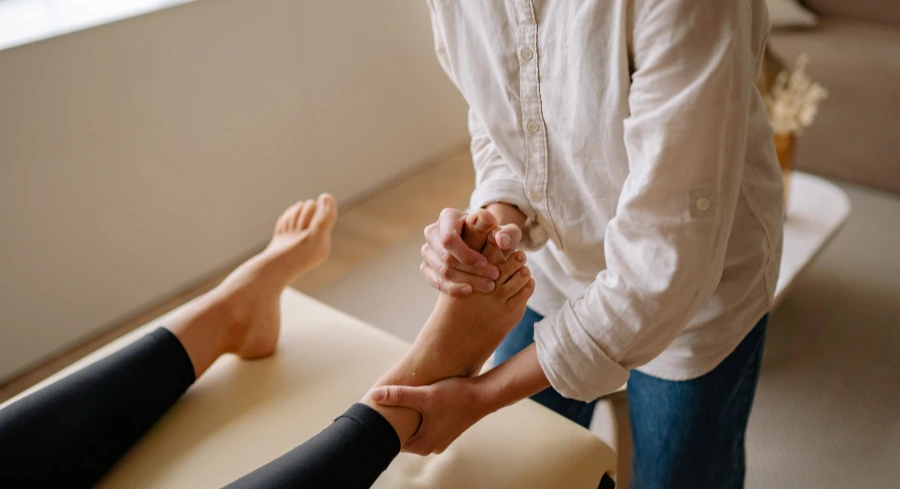Comprehensive Guide to Orthopedic Injuries and Innovative Treatment Options
By TOI Staff
November 18, 2023
Update on : November 18, 2023

Orthopedic injuries can be both debilitating and disruptive, affecting various parts of the musculoskeletal system. Whether you’re an athlete pushing your physical limits or someone dealing with the wear and tear of everyday life, understanding the injuries and available treatment options is crucial for a swift recovery. In this guide, we’ll explore several orthopedic injuries and discuss a range of innovative treatments, with a special focus on plantar fasciitis and the application of Platelet-Rich Plasma (PRP) therapy.
Rotator Cuff Tears: Physical Therapy and Surgery
Rotator cuff tears are common, particularly among athletes and individuals engaged in repetitive overhead activities. For mild to moderate cases, physical therapy focused on strengthening and flexibility exercises can often alleviate symptoms and restore function. In more severe cases, surgical intervention may be recommended to repair the torn tendon and restore optimal shoulder function.
ACL Injuries: Rehabilitation and Surgical Reconstruction
Anterior Cruciate Ligament (ACL) injuries frequently occur during sports activities that involve sudden stops or changes in direction. Initial treatment often involves rest, physical therapy, and strengthening exercises to stabilize the knee. For complete tears, surgical reconstruction is a common option, using grafts to replace the damaged ligament and restore stability to the knee joint.
Carpal Tunnel Syndrome: Bracing and Surgical Release
Carpal Tunnel Syndrome, often caused by repetitive hand and wrist movements, can lead to pain, numbness, and tingling. Non-surgical approaches include wrist braces, anti-inflammatory medications, and physical therapy. In more severe cases, surgical release of the carpal tunnel may be recommended to relieve pressure on the median nerve and alleviate symptoms.
Shin Splints: Rest and Physical Therapy
Shin splints, characterized by pain along the shinbone, are common in runners and athletes engaging in high-impact activities. Rest, ice, and anti-inflammatory medications are often the first line of treatment. Physical therapy focusing on strengthening and flexibility exercises can help prevent recurrence and promote a smooth recovery.
Plantar Fasciitis: PRP Therapy and Conservative Measures
Plantar fasciitis, a painful inflammation of the tissue connecting the heel bone to the toes, can be particularly challenging. Conservative measures such as rest, stretching exercises, and orthotic inserts are often recommended. For those seeking innovative treatment options, Platelet-Rich Plasma (PRP) therapy has shown promise. PRP involves injecting a concentrated solution of the patient’s own platelets into the affected area, promoting tissue regeneration and healing. To know more about PRP for plantar fasciitis, you can check this Selphyl Ortho informative post. It provides valuable insights into the application of PRP therapy and its potential benefits for addressing this common foot condition.
Meniscus Tears: Arthroscopic Surgery and Rehabilitation
Meniscus tears, often occurring due to twisting movements, can lead to pain, swelling, and limited knee mobility. Arthroscopic surgery, a minimally invasive procedure, is commonly employed to repair or trim the torn meniscus. Following surgery, a comprehensive rehabilitation program is crucial to restore strength and flexibility and prevent further knee issues.
Spinal Disc Herniation: Physical Therapy and Epidural Injections
Spinal disc herniation, causing pain and nerve compression, often responds well to conservative treatments. Physical therapy to strengthen the core muscles and improve posture is a key component. In cases where pain persists, epidural steroid injections may be recommended to reduce inflammation and provide relief.
Conclusion
Orthopedic injuries can impact individuals at various stages of life and activity levels. Understanding the range of treatment options available, from conservative measures to innovative therapies like PRP, empowers individuals to make informed decisions about their health and recovery. While these treatments offer promising avenues for healing, it’s essential to consult with a healthcare professional to tailor the approach to individual needs and circumstances. By combining expert guidance with a proactive mindset, individuals can navigate the road to recovery and return to an active and fulfilling lifestyle.
















